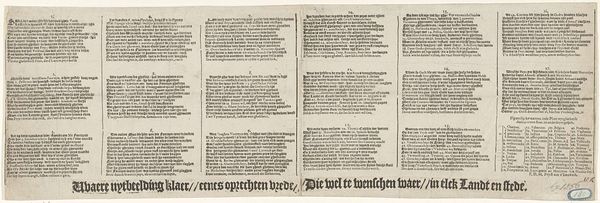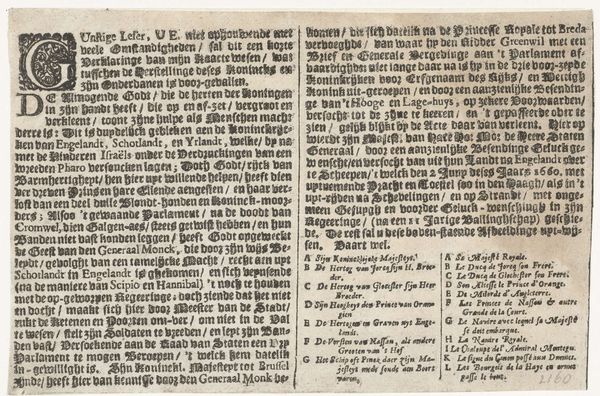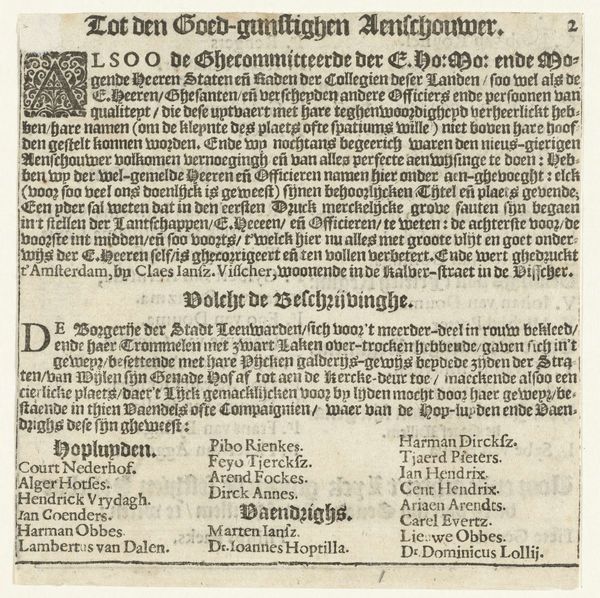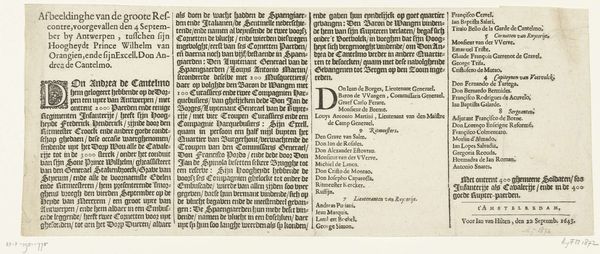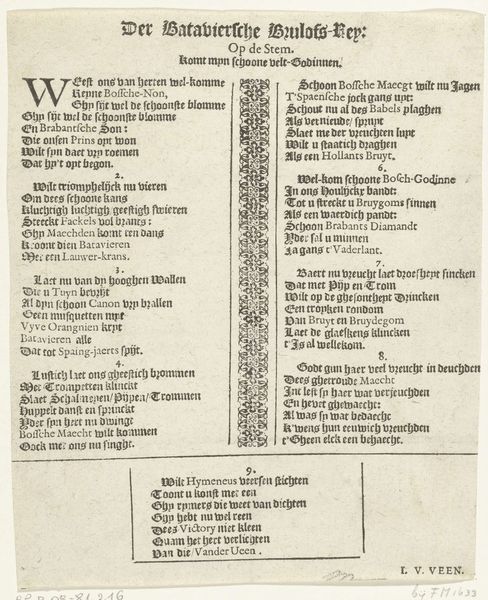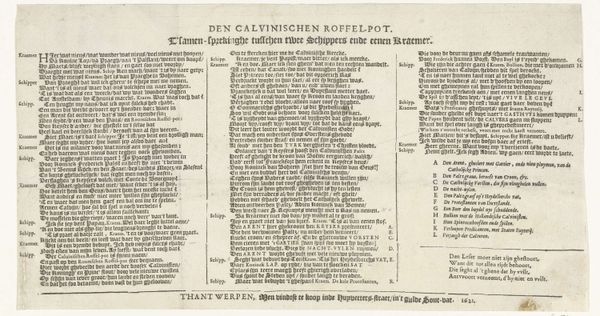
graphic-art, print, etching
#
graphic-art
#
baroque
#
dutch-golden-age
# print
#
etching
Dimensions: height 202 mm, width 282 mm
Copyright: Rijks Museum: Open Domain
Curator: This print, titled *Uittocht van de remonstrantse predikanten, 1619*, which translates to *The Exodus of the Remonstrant Preachers, 1619*, made using graphic art, etching techniques during the Dutch Golden Age, depicts a historical event. What's your initial take on it? Editor: Well, there's so much text! It feels almost like a flyer or a political announcement of some kind. I see some figures towards the right listed by numbered wagons, so it looks like they are leaving on a journey. Given the historical context, how should we read this piece today? Curator: As a historian, I interpret this work within the religious and political conflicts of the early 17th century Netherlands. The Remonstrants, who are seemingly being depicted, were a group with liberal theological views, and this print shows their forced departure after being condemned by the Synod of Dort. What does the text tell you about the attitude toward the departure? Is it celebratory, mournful, or something else? Editor: Given the title and your explanation, it definitely leans toward a sympathetic portrayal, a record of their expulsion rather than a celebration of it. I am seeing some words with negative connotations, like "bereght" for example... Curator: Exactly. It suggests a critical stance towards the religious authorities that forced them out. Prints like these were instrumental in shaping public opinion. How do you think visual media influenced the political and religious climate? Editor: I hadn’t really considered the role of art in public debate at that time, but I guess these images offered ways to broadcast your perspective and challenge existing powers? Curator: Precisely. The combination of text and image made it a powerful tool for disseminating ideas. Do you see this piece more as objective historical record or as persuasive propaganda? Editor: Hmm, leaning now towards propaganda because of the title and list format, and knowing that there were other points of view... Interesting! Thanks for showing me how history shapes artistic interpretation! Curator: Likewise, it is interesting to hear the initial reaction before analysis from someone new to the era. Understanding this work, and others, requires digging deep into the history of religious and political conflicts of the era.
Comments
No comments
Be the first to comment and join the conversation on the ultimate creative platform.
